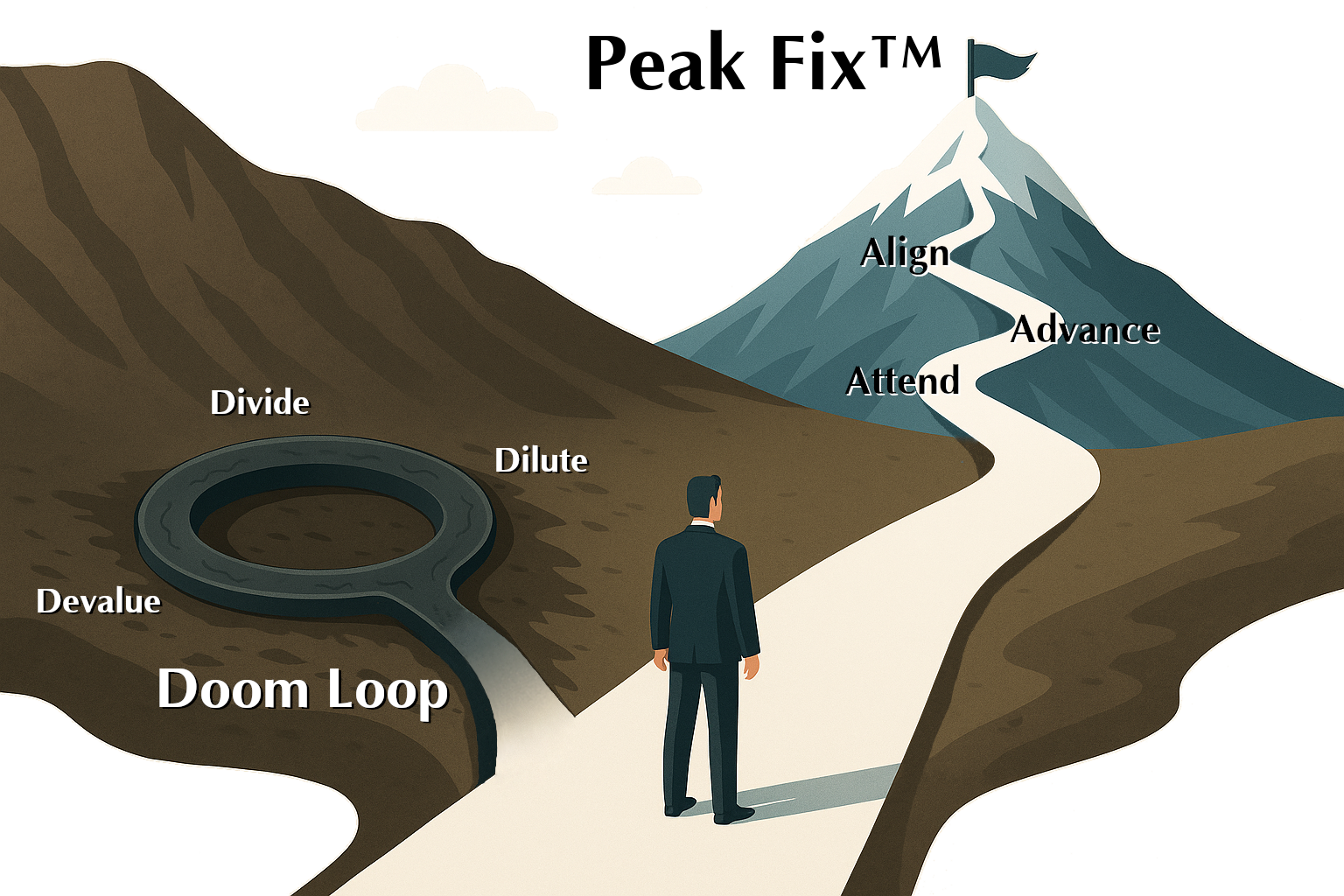Case Study X - The Startup
Award-winning startup X spun off from a top-15 commercial contractor to reduce costs and friction in repetitive building operations. Its original monolithic .NET platform reached meaningful ARR, but the back-end was limited and the dated UI no longer reflected a future-facing product. New leadership concluded that only a full rewrite on open-source microservices could unlock exponential growth to match the market opportunity.
The legacy system was pushed into maintenance mode, leaving software capability stagnant even as customer needs accelerated. Meanwhile, the new product was being developed at a blistering pace but required different data models and user experience. Customers faced complex migrations, while the engineering team found itself trapped in an endless pursuit of functional parity. The company doubled headcount to maintain both systems, but siloed teams struggled to coordinate and resources were diluted further by shifting product visions and lengthy, adjacent market experiments.
Despite consistent feats of engineering, investors and leadership saw burn climb to ten times revenue without visible value to customers. Key team members departed as frustrations rose and blame eroded morale. Ultimately, investors cut their losses from mounting costs and unmet expectations, salvaging what remained of the technology for potential repurposing elsewhere.
Case Study Y - The Private Middle-Market
Top-20 private middle-market lender Y successfully launched a mobile app for field employees through a newly formed skunkworks team. Encouraged by the success, leadership tasked the team with rewriting the company’s ballooning flagship desktop monolith. The rewrite quickly grew in complexity and scope, with separate teams split across the new build, legacy platform, mobile app, and additional greenfield initiatives.
Defining the functionality of the legacy system became an exercise in software archaeology. Newer hires struggled to decipher it, while senior staff were repeatedly pulled back into maintaining core processes only they understood. Quality testing was slowed by layers of permissions and dependencies. Although efforts were made to spread institutional knowledge, they were overshadowed by dependent business units repeatedly reprioritizing urgent, revenue-critical needs mid-sprint. Momentum on the rewrite slowed, while greenfield end-user adoption underperformed despite modern UI design.
The legacy team had begun to untangle the technical challenges with quality engineering, but company leadership grew impatient with delays and lack of visible wins for customers. Ultimately, the company reorganized the skunkworks team and scope dramatically, losing much of the talent and hard-won learning in the process. What remained was fragmented progress, sunk costs, and no clear modernization path forward.
Case Study Z - The Publicly-Traded Enterprise
Market-leading publicly traded enterprise Z has long been a technology pioneer. Over time, however, its central operating monolith grew unwieldy, requiring multiple teams just to keep it operational. Business units layered equally complex systems on top, replicating functionality while still depending on the fragile core.
Leadership authorized a modernization initiative, but delegated product vision to mid-level managers whose incentives were tied to the very systems they were meant to evolve. At the same time, business units withheld plans and resisted alignment due to perceived competition against each other.
These dynamics created destructive second-order effects. Teams modernized within their own silos, often blocking each other. Seeking a win, platform leadership authorized a multi-year migration to the cloud and a complete rewrite of the core platform. The legacy system was frozen in maintenance mode, signaling decommissioning even as parity remained elusive. Wrappers and workarounds proliferated. Rigid IT policies, rotating middle managers, and restrictive QA practices further eroded progress and restricted shared product knowledge.
Despite tens of millions invested and nearly a decade lost, the enterprise was left with fragmented systems, sunk human capital, and customers who experienced little benefit.
Case Studies - Top Tech Titans
Why do software rewrites fail, even at the world’s largest and most capable companies?
This brief outlines modernization efforts across eleven tech giants, including Apple, Amazon, Google, Microsoft, Facebook, Adobe, Netflix, Shopify, and others. It doesn’t just list examples, it surfaces patterns. If you are navigating a rewrite, this may help you recognize familiar signals before they escalate.
Inside:
• Snapshots of tech leaders caught in rewrite traps
• The transformation scale: Doom Loop → Mitigation → Peak Fix™ → ongoing evolution to help frame your own initiatives
• Two outlier case studies demonstrating conditions of course correction and outcomes under very unique conditions; can you spot them?
Common trajectory:
• Problem - product debt
• Ambition - modernization
• Stumbling blocks - code freeze, team dilution, parity chase
• Outcomes - resource burn, stale product, lost opportunity & market share
Org size does not immunize™. Orgs of any size are potential cautionary tales.
If this sounds familiar, download the brief and reach out. Mandau Coexecutives supports leaders navigating complex tech transitions with insight and clarity toward the best chance of a successful future.



